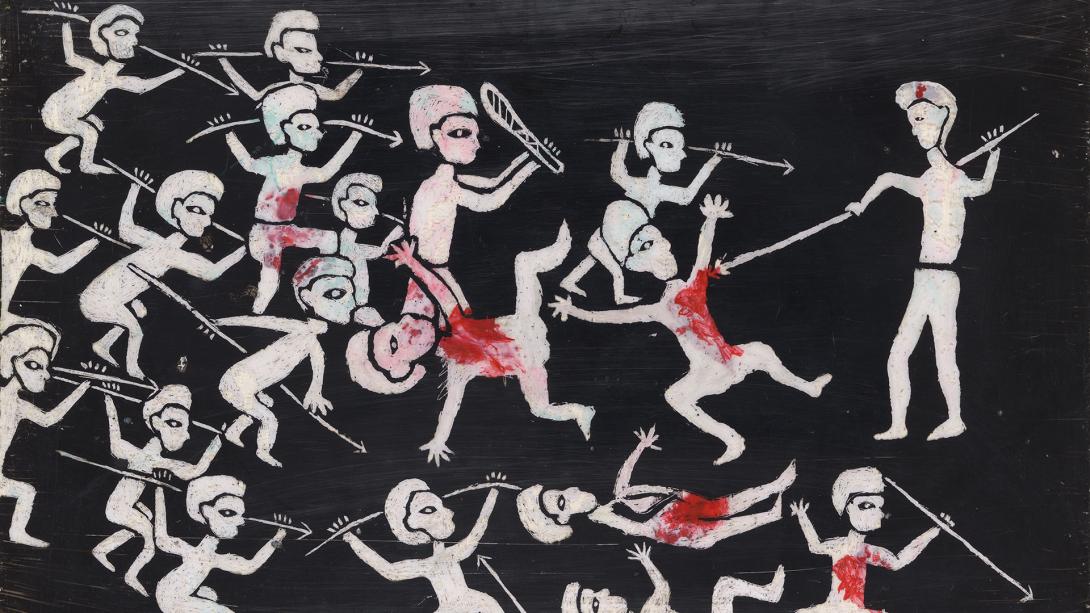Images of the Crisis
APT9
Established 2012 Autonomous Region of Bougainville (AROB)
Led by: PNG Red Cross, Buka, International Committee Red Cross and University of Papua New Guinea
The works in ‘Images of the Crisis’ were created as part of an art project conducted by the Red Cross and the University of Papua New Guinea in the Autonomous Region of Bougainville. Introduced to reproductions of the work of Bougainville artist Herman Somuk (also in APT9), participants were invited to visually record their memories of the Bougainville Crisis, as well as their hopes for the future. The resulting works include scenes of combat and violence, figures running from burning houses, as well as portraits of crying figures. The symbol of the church is a recurring motif, acknowledging the importance of faith and church groups as a place of refuge and healing both during and following the crisis. At times directly referencing Somuk’s compositions, as well as his mobilisation of new mediums, these paintings project the artist’s experience of their dramatically changing world onto a broader stage.

George / Untitled 2012 / Synthetic polymer paint on mylar / 15 x 21cm / Collection of the International Committee of the Red Cross (ICRC), Papua New Guinea and PNG Red Cross Society / Photograph: Natasha Harth
The 'Images of the Crisis' project brings together a group of paintings that are personal reflections on the decade-long blockade and civil war in Bougainville during the 1990s — a conflict that claimed over 15 000 lives.
The paintings were created by an intergenerational group of men and women, who participated in a series of workshops in Buka and Gagan (North Bougainville), Rorovana (Central Bougainville) and Moro (South Bougainville) in 2012. Led by the International Committee of the Red Cross Papua New Guinea and the Papua New Guinea Red Cross Society, the workshops introduced participants to the work of Gagan artist Herman Somuk (c.1901–65), whose drawings feature in APT9. The workshops explored the reverse-painting technique known as fixe sous verre (painting under glass), which, in this instance, involved painting ink onto the back of sheets of mylar, and then scratching into the ink and infilling with coloured paint.
The paintings include images of combat, burning villages and people crying, as well as landscapes and depictions of important cultural practices. The church is a recurring motif, and represents the important role it played as a source of hope and support for many at a time of crisis. Acts of self-narration and remembrance are crucial to communities recovering from histories of war and trauma, including the communities of Bougainville.
